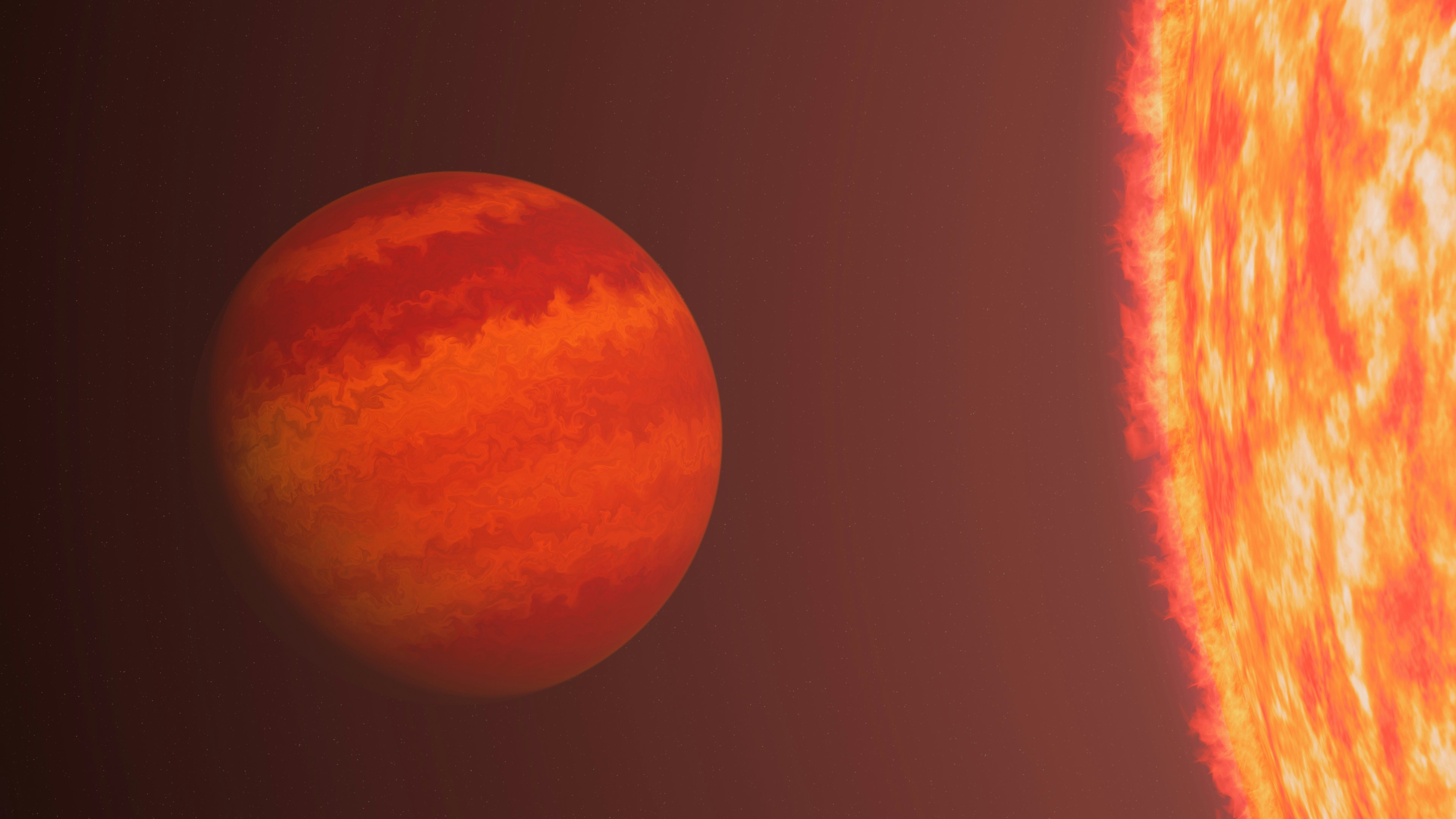
About 1800 light years away, a planet the size of Neptune is orbiting perilously close to its baleful, bloated red star — and it could be carrying some clues about Earth’s eventual fate.
The planet — nicknamed Phoenix because TIC 365102760b is a bit unwieldy — orbits just 5 million miles from its star: 6 times closer than Mercury’s orbit around the Sun. At that distance, it should be a barren, scorched rocky core, but somehow it still has a light, puffy atmosphere, inflated but not blown away by its star’s tremendous heat. Phoenix changes what we think we know about what happens to planets’ atmospheres as stars like our Sun age and expand.
Johns Hopkins University astrophysicist Sam Grunblatt and his colleagues published their work in The Astronomical Journal.

Fluffy But Durable
Grunblatt and his colleagues combined data from TESS and the Keck Observatory to study this planet’s density by analyzing how it pulls at its star, which causes a slight wobble visible in the Keck data. They are also studying how light filtered through the planet as it passed in front of its bloated red star; this is also visible in the TESS data.
It turns out that the planet is extremely light and fluffy, with a layer of gas that’s thick, but still thin enough to see starlight filtering through. That suggests that it’s made mostly of gas, but that the star’s heat has puffed up the gas so it’s even lighter and fluffier than it normally would be. And that makes it extremely surprising that it’s still there at all.
Normally, a planet this close to its star would have lost its atmosphere by now. That’s especially true for a world like Phoenix, where the atmosphere is hot and puffed out to high altitudes, so atoms are moving faster — and farther from the planet’s gravitational grip. Phoenix’s atmosphere should be more vulnerable to being stripped away, or to simply having atoms bounce free of the planet’s gravity. But it’s still there, somehow.
Understanding how Phoenix has held onto its atmosphere could shed some light on what might happen to our own cozy (but ultimately doomed) little planet in 5 to 7 billion years, when our Sun becomes a red giant like Phoenix’s star.
“Some of our understanding of how the longevity of life on Earth might continue gets thrown into question by studies like this,” Grunblatt tells Inverse, “although it's harder to make those direct comparisons.”
Gas Giant vs. Expanding Star
Grunblatt and his colleagues have some ideas about how Phoenix has held onto its atmosphere in the face of its Sun’s expansion, and they are testing some possible explanations with computer simulations.

Planets close to red giant stars like Phoenix's may have an easier time holding on their atmospheres than planets orbiting even at a slightly wider distance around much smaller, dimmer stars called red dwarfs. That's because red dwarfs tend to be younger and prone to outbursts of high-energy radiation like ultraviolet and x-rays, which ruthlessly strips away gas on nearby planets. But red giants, like the star Phoenix orbits, are much older and more sedate. They burn hotter than red dwarfs, but mostly in infrared and visible light, not the higher-energy radiation that wreaks so much havoc on nearby planets' atmospheres.
(Side note: red dwarfs and red giants, although they sound like they should be related, are actually on two completely different evolutionary paths. Red giants are the elderly version of yellow stars like our Sun. Red dwarfs, on the other hand, are born as small, dim reddish stars, and eventually they'll fade and cool into white dwarfs.)
Grunblatt says it's also likely that Phoenix has heated and bloated along with its star, which means it hasn't had that fluffy, vulnerable atmosphere for very long.
“In the last 5 to 10 percent of the star's life, where it has evolved into this red giant, the increase in radiation can heat up the planet and cause the planet's atmosphere to expand to what we see today,” Grunblatt says. “This is known as planetary re-inflation.” In other words, Phoenix’s atmosphere has only really been in danger for a relatively short while, which explains why it hasn’t blown away yet.
A Stay of Execution for Future Earth?
If Grunblatt and his colleagues are right, then Phoenix’s story could tell us something about the future of Earth.
In about five billion years, our Sun will have fused all the hydrogen in its core into helium. In the moments after hydrogen fusion stops, the stars inner layers will collapse inward; that will trigger helium fusion in the Sun’s core, but it will also start fusing a layer of hydrogen outside the core, somewhere in the star’s middle layers. The heat it produces will cause the Sun’s outermost layers to inflate, like a burning red balloon.
Astrophysicists have been pretty sure about what comes next: As the Sun’s expanding surface looms closer to Earth, its radiation will blow away our planet’s life-sustaining atmosphere. Not long after that, it will swallow the dead ball of rock left behind.
But thanks to Phoenix, there’s a tiny sliver of hope in that gloomy prophecy.
“What Phoenix is telling us is that the atmosphere is actually more resilient to this evolution than we than we previously thought. That might mean that the Earth is actually able to hold on to its atmosphere right up until this engulfment process begins,” says Grunblatt.
That sheds light not only on Earth's very final days, but on its last billion years or so. It could prompt scientists to revisit questions like “How long will it take for the planet's surface to get too hot for liquid water, and life?” Whatever life is still on Earth in five billion years or so may get a brief stay of execution.
And that’s all Phoenix gets, too. In about 100 million years, its star will have expanded outward far enough to swallow Phoenix, atmosphere and all.







